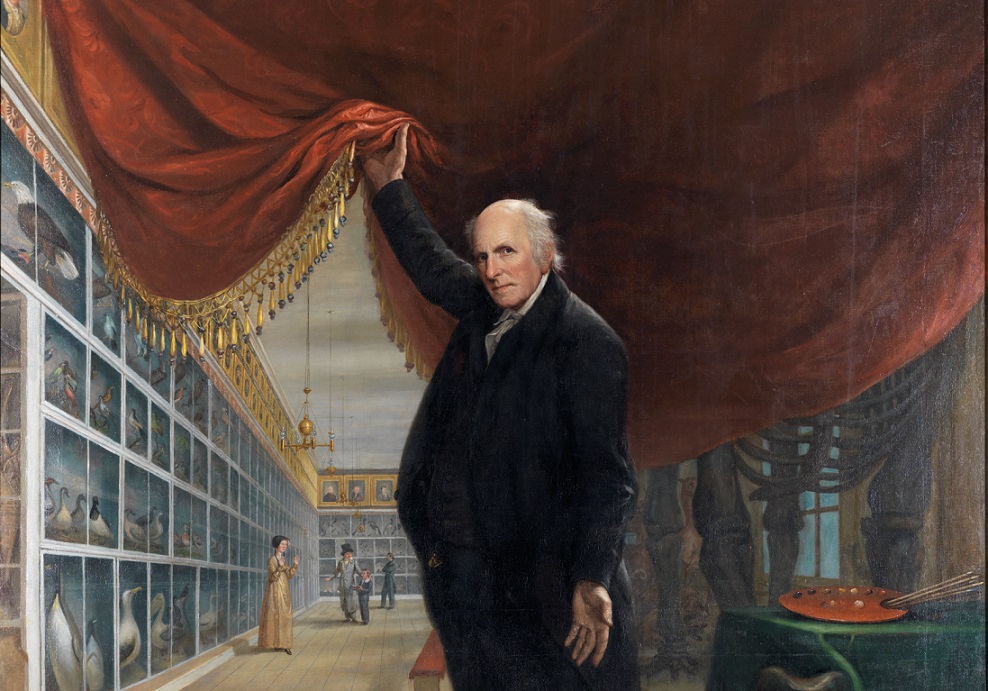In his monumental self-portrait, Charles Willson Peale beckons viewers into his museum, which is visible beyond the raised curtain. At the time of the painting, Peale was in his eighties, and at the end of a long career in art and natural sciences. Peale had founded the Philadelphia Museum, the nation’s first museum of art and nature (now permanently closed), in the 1780s. For 25-cents admission, visitors could see more than 10,000 specimens of flora and fauna, as well as portraits of notable Americans.
Peale’s museum reflected early American thought about the established vision of natural order. His displays followed the Linnaean principles of taxonomy, including a portrait of George Washington hanging above an American bald eagle, with songbirds, ducks, and geese—birds perceived as weaker—below the powerful raptor. Further, the inclusion of the dead American turkey awaiting taxidermy in the left foreground of the picture references debates over the national bird.
Opposite the brightly-lit organized exhibition space is a skeleton in the shadows, barely visible behind the curtain on the right side of the painting. Around 1800, most Europeans and Americans doubted that a whole species could go extinct. In a time of nature and nation-building, the discovery of an extinct mammal was unsettling and pointed to an emerging understanding of environmental dynamism and the limitations of the classical hierarchy of nature.
Nature’s Nation opens this Saturday, May 25 and members get to see the museum today, May 24! See this work along with 100 others that explore the relationship between art and nature over 300 years of American history.
Collection Connection: Charles Willson Peale is one of the most influential figures in American art—he had a large artistic family who collectively helped shape the image of the nation. See: Charles Willson Peale, George Washington; James Peale (brother), The Ramsay-Polk Family at Carpenter’s Point, Cecil County, Maryland; Raphaelle Peale (son), Corn and Cantaloupe; Rembrandt Peale (son), Self- Portrait.
Written by Mindy Besaw, curator of American art at Crystal Bridges.





